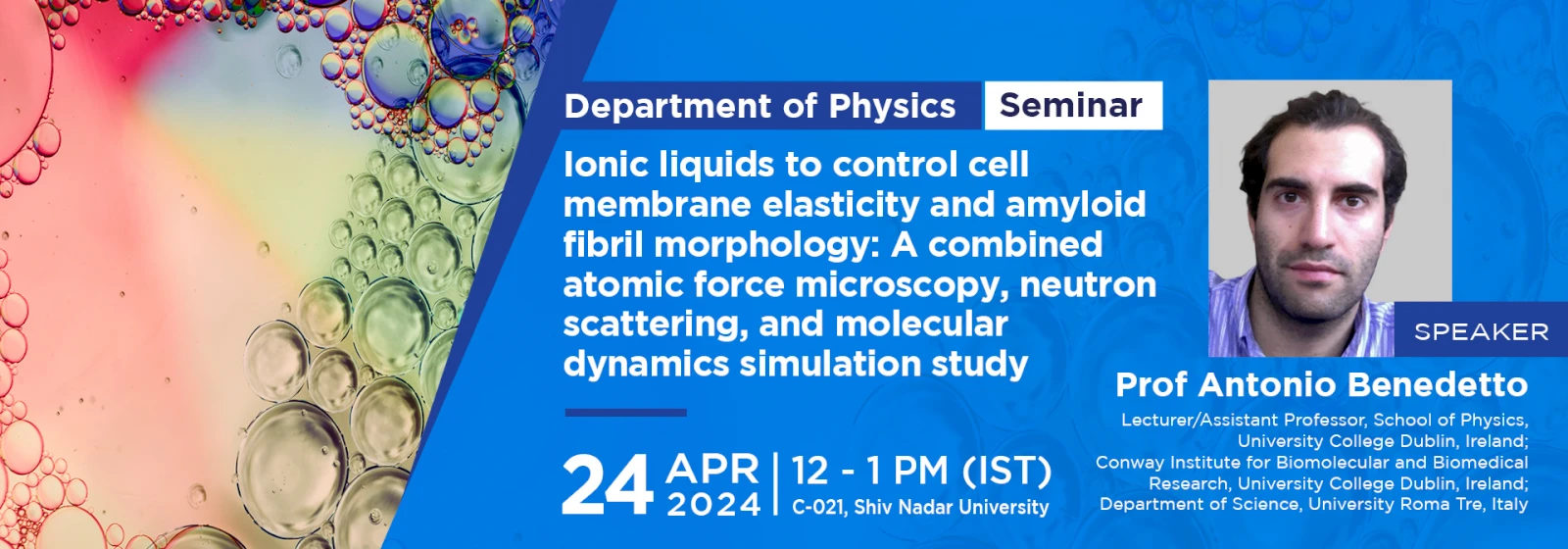Department of Physics | Seminar: Controlling Cell Membrane & Amyloid Fibril with Ionic Liquids
Ionic liquids (ILs) are a vast class of organic electrolytes composed of an organic cation and either an organic or inorganic anion, whose melting temperature falls around room temperature. In the last 20 years, several studies have shown moderate-to-high toxicity towards cells and microorganisms for a number of these compounds, breaking the dream of their absolute green character. Toxicity, however, is synonym with affinity, and this has stimulated a series of investigations focused on the mechanisms of action (MoAs) of ILs, which understanding can ease the development of IL-based approaches in drug delivery, bio-medicine, pharmacology, material science, and bio-nanotechnology broadly. Atomic force microscopy and neutron scattering are the two major approaches in use in my Lab, which we combine with computer simulations and a variety of biochemical tools. After presenting an overview of ILs in biophysics [1], I will focus on two representative cases of study under investigation in my Lab [2-6]. First, I will discuss the absorption of ILs into lipid bilayers used as biomembrane models [2] and their effect on bilayer elasticity (Fig. 1) and cell migration [3,4]. I will then move into protein amyloidogenesis to show the effect of selected ILs on amyloid fibrils properties [5]. I will conclude my seminar by presenting some current (and future) work underway in my Lab, including our preliminary results on magnetic ILs, a family of ILs possessing a magnetic character [6].
References:
[1] P. Kumari, V. Pillai, A. Benedetto, Biophys. Rev. 12, 1187 (2020)
[2] A. Benedetto, Biophys. Rev. 15, 1909 (2023)
[3] P. Kumari, A. Faraone, E. Kelley, A. Benedetto, J. Phys. Chem. B 125, 7241 (2021)
[4] P. Kumari, V. Pillai, B. Rodriguez, M. Prencipe, A. Benedetto, J. Phys. Chem. Lett. 11, 7327 (2020) [5] V. Pillai, et al. J. Phys. Chem. Lett. 13, 7058 (2022)
[6] A. Benedetto, P. Ballone, Langmuir 34, 9579 (2018)

Share this: